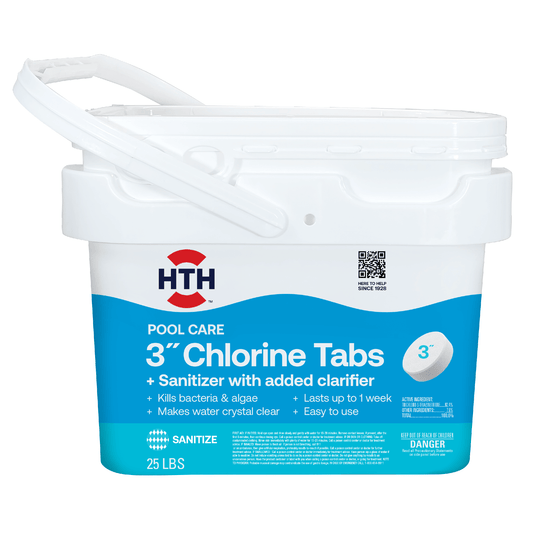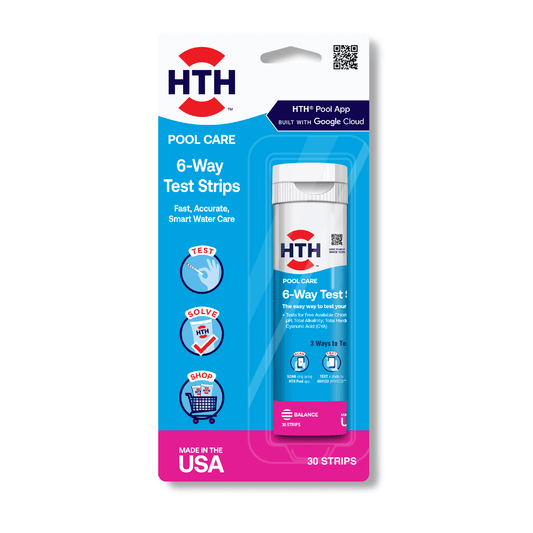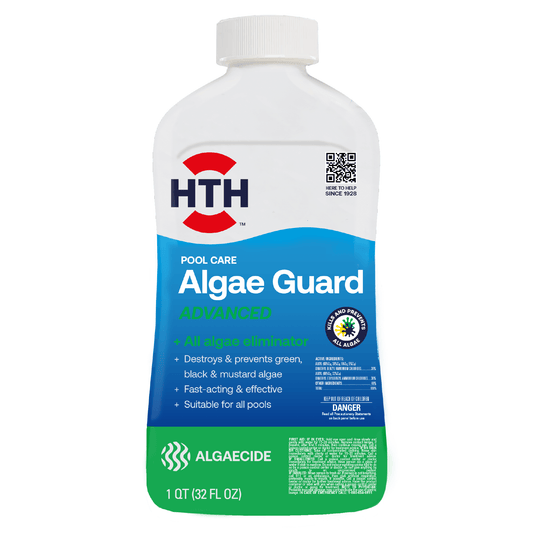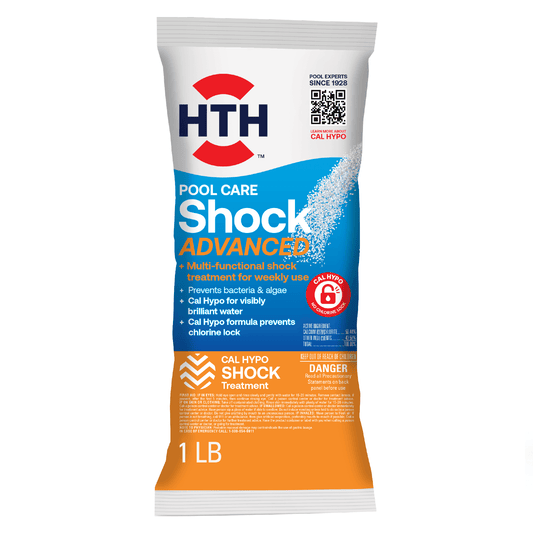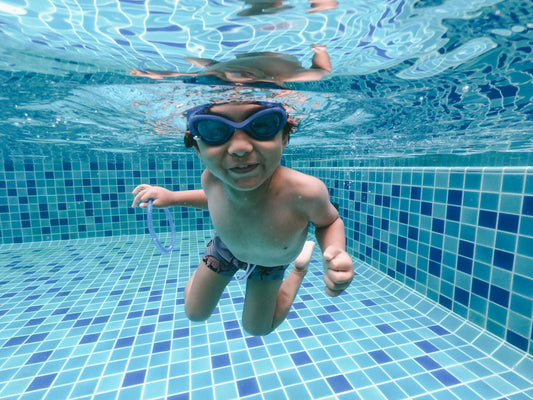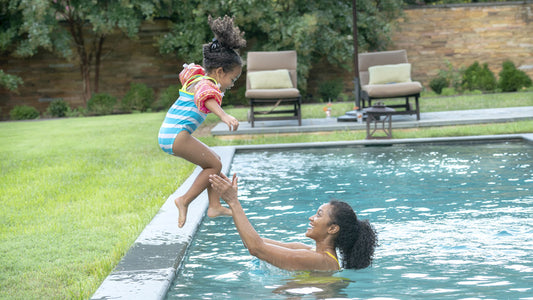Opening my pool: How do I turn my green water blue?
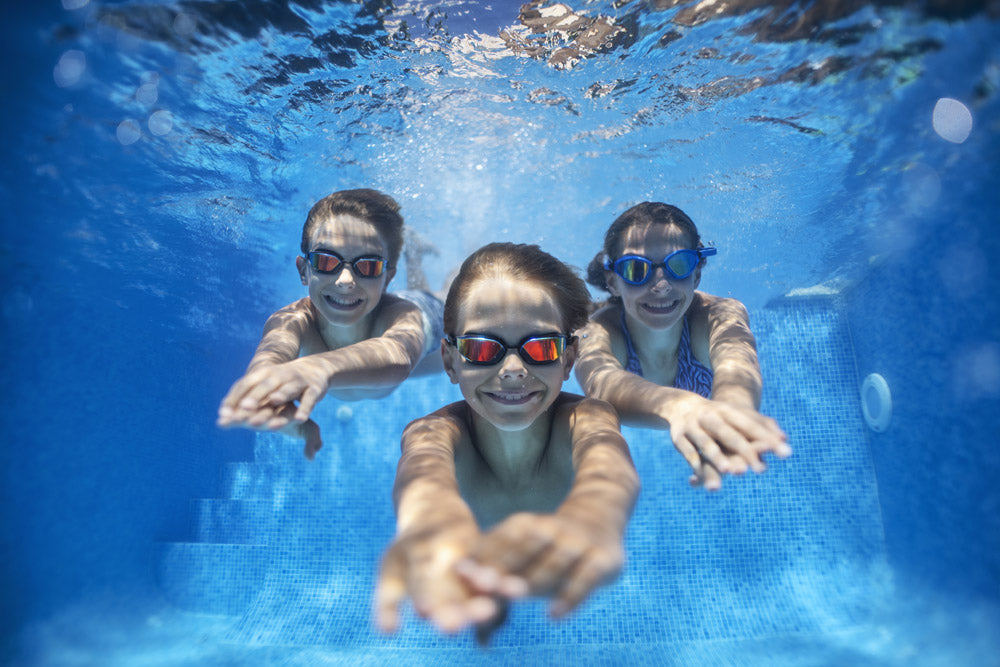
Need more help?
Call us
Prefer to call us?
We've got someone standing by daily from 9 a.m. – 7 p.m. ET, Monday – Friday
(866)-HTH-POOL- Category:
- Pool •
- Pool Problems •
No matter what type of pool you have, there’s ONE thing every pool opening process has in common: Getting the WATER clean and clear for swimming. And yet, it seems SO tough to find exactly the steps required to transform your winter green water to sparkling blue. That’s why, in this article, we'll focus exclusively on the pool water and the chemicals you'll need to create healthy swimming conditions. We'll give you the info you've been looking for including the list of pool products you'll NEED, other pool products that may HELP, and in what order to apply them to your swimming pool for the best, fastest clear water results. An important thing to note is that pool opening can take a few days. Even up to a week depending on the condition of your pool water. So be sure to start the opening process at least a week before you hope to take your season’s inaugural swim.
Shopping List for Pool Opening
Cal-hypo Pool Shock Treatment
Algaecide
Chlorinating Tablets
Test Strips
Balancers (Alkalinity Up, pH Increaser, pH Decreaser, Calcium Hardness Increaser, Stabilizer – not necessarily all of them; your test strip should tell you which balancers you’ll need)
Flocculant or Clarifier
(Optional / As Needed)
HTH® Metal, Stain and Scale Control
(Optional / As Needed)

Mission 1: Get rid of algae
Step #1: Shock the water
When you pull off the pool cover, there’s a good chance you’ll find algae has set up shop in your pool water during the off season. The first thing you'll want to do is apply shock in the evening based on the volume of your pool. It’s important to know that there are different types of pool shock formulas; it’s important to use a cal-hypo shock product because it will not cause over-stabilization or “chlorine lock”(which essentially means your chlorine works much slower and you may need to partially drain your pool and replace with fresh water). The shock treatment you use will raise the chlorine level in your pool enough to kill the algae. If the first round of shock doesn’t kill all the algae, you may have to apply another round of shock the next evening. Make sure you've killed all algae before moving on to the next step.
Step #2: Remove dead algae
Now, you have a bunch of dead algae in your pool so you'll also want to vacuum that out of the pool. If the algae is hanging on the water and it’s difficult to vacuum, that’s when you can try a flocculant. A flocculant attaches itself to debris and weighs it to the bottom so it’s easier to vacuum. Even after flocculant and vacuuming, your pool water may still be cloudy. That’s because some particles are too small to get removed by your filter. If your water is blue but still cloudy, apply a clarifier. Clarifiers are similar to flocculant but more effective with really tiny particles; they’re designed to attach themselves to the tiny particles making them big enough to get picked up by your filter.
Mission 2: Keep the algae away!
Step #1: Add chlorinating tablets
Now, before we do anything else, we want to prevent that algae from coming back, so we need to immediately start our algae prevention routine. Take your chlorinating tablet and pop it in a floater or the skimmer. Your sun-protected chlorinating tablet can be applied in daylight, so once all algae is dead and removed from the pool, you’ll want to immediately get that chlorinating routine started. You may need to add chlorinating tablets every week, so getting a large supply of them at the beginning of the season is probably a good idea.
Step #2: Apply Algaecide
Twenty-four hours after shock, apply a strong algaecide that kills and prevents green, yellow and black algae – being sure to apply the correct amount based on the volume of your pool. Applying algaecide routinely every week BEFORE you see any signs of algae will help keep your pool clean and your swimmers swimming.

Mission 3: Swimmer comfort
Step #1: Test your water
Now that your algae’s gone and you’ve already started to defend your pool from the recurrence of algae, it’s time to balance your water. Testing and balancing your water is all about healthy swimming conditions and swimmer comfort. Start by dipping your test strip in the pool water, following the package instructions. Pro tip: HTH® Pool Care 6-Way Test Strips make this testing process quick and easy. After dipping, use the HTH® Test to Swim™ App—now with more accurate results from Google Cloud Vision Technology—to snap a photo of your test strip. You’ll get quick and accurate results as well as personalized instructions in seconds. If apps aren’t for you, simply compare your strip to the color-coded chart on the back of the test strip bottle or use our interactive chart here. Either way, you’ll get exactly the information you need to make sure your pool water is healthy and balanced.
Step #2: Apply your balancers based on your test strip results
Once you've determined your pool’s alkalinity, pH, and calcium hardness, you can apply your balancers as recommended by your water test results. Applying these during the day is fine.
A Note About Hard Water & Metals:
If you know you have hard water or your water has a lot of metal in it, you may experience stains on your pool surface and equipment or have to deal with discolored water. If that’s the case, apply a Metal, Stain & Scale Control to your pool water as part of your regular maintenance routine.
Mission 4: MAINTAIN!
Step #1: Plan your TWICE WEEKLY pool routine
Now, you just did a lot of work to get your pool looking irresistibly swimmable. So, let’s keep your pool clean and clear all summer by establishing your pool care routine. This will help ensure that any bacteria, virus or contaminant doesn't have a chance to cause problems.
Twice every week:
1. Test your pool water
2. Apply balancers as directed by your pool test
3. Apply a new chlorinating tablet every week (or as needed as indicated by your test strip results)
4. Apply shock in the evening
5. Apply algaecide 24 hours later
Step #2: Choose two weekly “POOL CARE DAYS” and stick to it
Maybe it’s every Tuesday and Thursday to prep for the weekend. Maybe it’s every Sunday and Tuesday to recover your pool from a lot of weekend activity. Just make sure you stay on top of your pool water care every week.
As always, we hope this helps. Here’s to a clean, clear swimming pool all summer long!
As always, we’re here to help. If you have questions, contact our help line at 1-866-HTH-POOL or talk to our experts with our live chat!
Caution
Please read the following important reminders before adding pool chemicals to water:
• NEVER mix products together or dissolve before use.
• ONLY enter pool when FAC levels are below 4 ppm to prevent risk of bodily harm.
